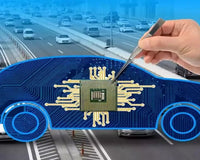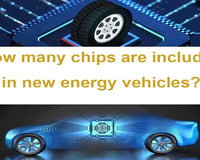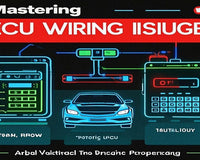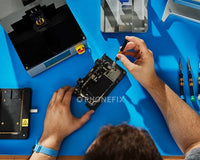ECU is the brain of modern cars, that controls and monitors various systems, such as the engine, transmission, fuel injection, and emissions. It collects data from sensors and makes decisions to optimize vehicle performance.However, like any other electronic device, ECUs can encounter problems that affect the overall functioning of the vehicle.
Common Causes of ECU Damage:
Electrical Issues: Voltage spikes or incorrect wiring can lead to ECU failure. For instance, jump-starting a car with reverse polarity can cause significant damage to the ECU.
Water Damage: Exposure to moisture or water can corrode the internal components of the ECU. This is particularly a risk in vehicles that have experienced flooding or leaks, as water can infiltrate the ECU housing and cause short circuits.
Heat Exposure: Excessive heat can degrade the ECU's components over time. This can occur in vehicles that operate in high-temperature environments or have poor ventilation around the ECU.
Physical Damage: Accidents or impacts can physically damage the ECU, leading to malfunction. This includes damage from debris or collisions that affect the ECU's housing or connections.
Component Failure: Like any electronic device, the ECU can suffer from component failures, such as blown capacitors. These failures can often be repaired if caught early enough.
Repairing a damaged Engine Control Unit (ECU) can be a complex process, but it is often possible with the right tools and knowledge. Here’s a detailed guide on how to approach this task.
Diagnosis: Before attempting any repairs, it is crucial to diagnose the problem accurately. Use a diagnostic scanner to retrieve error codes from the ECU. This will help identify specific issues that need to be addressed. Common symptoms of a faulty ECU include engine misfires, poor fuel economy, and warning lights on the dashboard.
Visual Inspection: Once you have diagnosed the issue, perform a visual inspection of the ECU. Look for signs of physical damage, such as burnt components, corrosion, or broken pins. You can also use a magnifying glass to find the fault point faster and more accurately. If the ECU has been exposed to moisture or high temperatures, it may have internal damage that is not visible externally.
Disassembly: To repair the ECU, you will need to disassemble it. This typically involves removing screws and carefully opening the casing. Be cautious during this process to avoid causing further damage. Take note of how components are arranged for reassembly later.
Identify Damaged Components: Once the ECU is open, identify any damaged components. This may include capacitors, resistors, or microcontrollers. Using a multimeter to test the functionality of various parts can help confirm which components are faulty. This can save time and resources by preventing unnecessary replacements.
Replace Faulty Parts: If you find any damaged components, you can replace them. This usually involves desoldering the faulty part and soldering in a new one. Ensure that you have the correct specifications for replacement parts.
Reassembly: Carefully reassemble the ECU, ensuring that all components are correctly positioned and secured. Double-check that no tools or foreign objects are left inside the casing before sealing it up.
Testing: After reassembly, it is essential to test the ECU. Reconnect it to the vehicle and use a diagnostic scanner to check for any error codes. Monitor the vehicle's performance to ensure that the repair was successful. If issues persist, further investigation may be necessary.
Software Reprogramming: After physical repairs, the ECU may require reprogramming or updating its software to ensure compatibility with the vehicle's systems. This can often be done using specialized diagnostic tools that interface with the ECU.
Repairing a damaged Engine Control Unit (ECU) can be a complex task, often requiring specialized knowledge and equipment. Suggestions seeking professional help. Specialized ECU repair services can often diagnose and fix issues more efficiently, especially for complex problems that require advanced tools and expertise.










